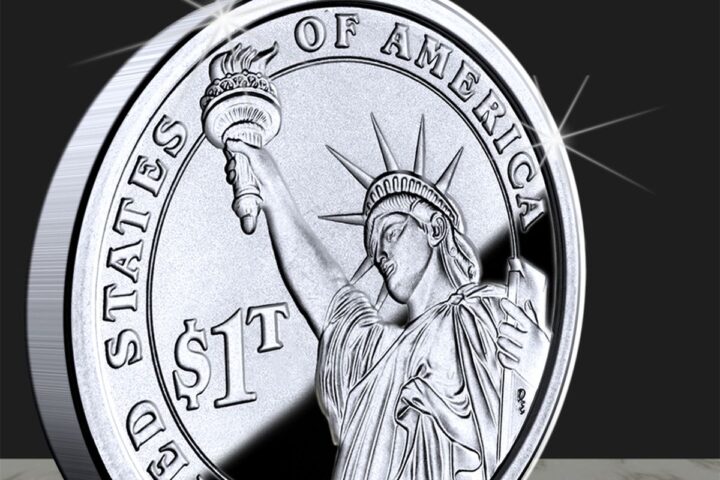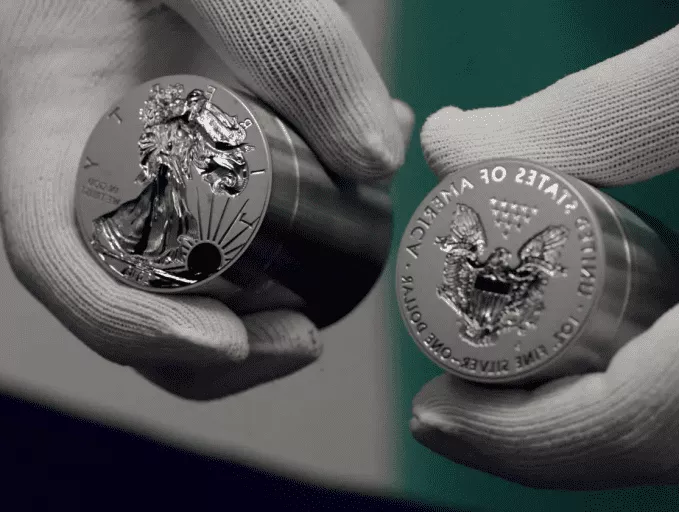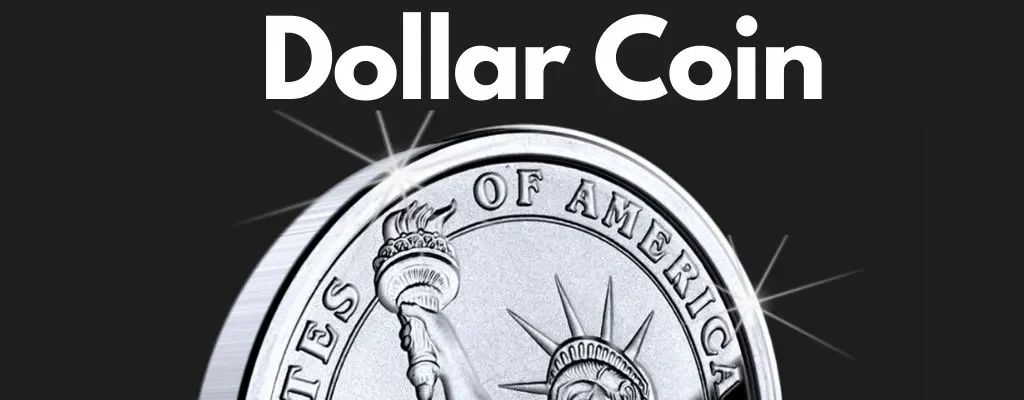The United States has been no stranger to political and financial turmoil in recent years. With the national debt surpassing $28 trillion, both Republicans and Democrats are scrambling to find a solution to the ever-growing problem. In the midst of the debt limit standoff between these two parties, an unconventional and seemingly absurd idea has emerged: minting a $1 trillion platinum coin. But could this seemingly far-fetched idea actually help consumer lenders to forgive credit card debt?
The Concept Behind the Trillion-Dollar Coin

The trillion-dollar coin proposal is not a new one; it has been circulating for years as a possible way to resolve debt issues. The idea was first introduced in 1997 by Yale law professor Jack Balkin as a way to bypass the statutory debt limit. The concept is simple: the U.S. Treasury would mint a platinum coin with a face value of $1 trillion and deposit it at the Federal Reserve. The Fed would then credit the Treasury’s account with $1 trillion, giving the government the ability to pay its debts and avoid defaulting.
Legal Basis for the Trillion-Dollar Coin
The idea of a $1 trillion coin may sound ludicrous to some, but it is actually grounded in U.S. law. Specifically, the legal basis for this idea comes from a loophole in the Coinage Act of 1996, which allows the Secretary of the Treasury to mint and issue platinum coins with whatever denominations they deem appropriate. This law was originally intended to allow the creation of commemorative coins, but there is no explicit prohibition against using it to mint a trillion-dollar coin.
The Pros and Cons of the Trillion-Dollar Coin

As with any idea, there are both advantages and drawbacks to minting a trillion-dollar coin.
Pros:
1. Averting a Debt Crisis: The primary advantage of the trillion-dollar coin is that it could provide the government with the funds needed to pay off its debts and avoid a default. This would not only protect the U.S. economy but also help maintain the country’s credibility on the world stage.
2. Bypassing Political Deadlocks: By utilizing the loophole in the Coinage Act of 1996, the government could sidestep the ongoing debt limit standoff between Republicans and Democrats. This would enable the U.S. to address its debt problem without being hamstrung by partisan politics.
Cons:
1. Inflation and Devaluation: Critics of the trillion-dollar coin argue that introducing such a large sum of money into the economy could lead to rampant inflation and devaluation of the U.S. dollar. This would ultimately harm consumers and businesses, negating any benefits gained by avoiding a debt crisis. When a country decides to devalue their currency to make its goods and services cheaper, it can cause an increase in inflation. Inflation means that as the prices of goods and services rise, the value of a currency declines. The value of a currency is based on the goods and services that a country produces.
2. For example, if a country produces goods that are cheap to produce and expensive goods to produce, their currency will be valued based on the cheap goods to produce.
3. If a country can’t produce goods cheap, it will have to find other ways to make its goods more competitive. If they decide to devalue their currency, they will make the goods that are expensive to produce cheaper.
4. Setting a Dangerous Precedent: Some experts worry that minting a trillion-dollar coin could set a dangerous precedent, encouraging future administrations to rely on this unconventional method to resolve debt issues. This could ultimately undermine the stability and credibility of the U.S. financial system. The U.S. government runs out of money to pay all of its bills on Oct. 18, according to the Treasury Department, and if Congress does not raise the debt limit — the amount of money the government is allowed to borrow — economists warn it could trigger a recession. Though lawmakers acknowledge the gravity of the situation, lawmakers have not come to agreement how to resolve the issue, with Republicans insisting that Democrats raise the debt limit using their narrow control of Congress.
5. Legal Challenges: While the Coinage Act of 1996 provides a legal basis for minting the trillion-dollar coin, it is likely that such an action would face legal challenges. Opponents could argue that the coin’s creation is an abuse of the law’s original intent, potentially leading to lengthy court battles and further uncertainty.
Conclusion: Is the Trillion-Dollar Coin a Real Solution?

The trillion-dollar coin is a fascinating idea, but its feasibility as a solution to the U.S. debt crisis remains uncertain. While it has the potential to avert a financial disaster and bypass political deadlock, it also carries the risk of inflation, devaluation, and setting a dangerous precedent. Additionally, legal challenges could complicate its implementation.
Then there’s the question of what a $1 trillion coin would mean for U.S. monetary and fiscal policy. Monetary policy means making decisions about the money in the economy. That’s mostly left up to the Federal Reserve, which is somewhat insulated from political tinkering. Fiscal policy means making decisions about what the government spends money on. That’s an entirely political process left up to Congress and the president.
Ultimately, whether or not the trillion-dollar coin is a viable solution depends on a variety of factors, including the political and economic climate, the willingness of lawmakers to pursue unconventional solutions, and the potential risks and benefits. While the idea may seem far-fetched, it is important to consider all possible solutions when dealing with a complex and pressing issue like the national debt.




